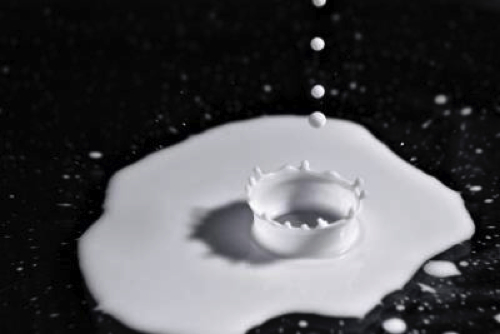Milk contains DHT and IGF-1, acne hormones that trigger blemishes in susceptible individuals. Learn how milk-free diets can naturally create acne free skin.
Eliminating dairy from a diet may be the key to acne free skin for some individuals. Milk has been anecdotally linked to acne for almost a century now, according to Dr. F. W. Danby, an assistant professor of dermatology at the Dartmouth Medical School. He says that milk contains hormones that cause acne flare-ups in individuals who are genetically predisposed to the condition. Even though the connection between milk consumption and acne is not a proven one due to a lack double blind studies, large epidemiological studies and strong anecdotal evidence suggest a link between consuming many servings of milk and blemishes, especially in teenagers.
Research Studies Linking Milk Consumption with Acne
A large May 2008 study published in the Journal of the American Academy of Dermatology showed the link between acne and milk consumption in teenage boys. The study recruited 4273 boys and reported that there was a positive association between skim milk consumption and acne. The researchers concluded that skim milk may contain certain hormonal constituents that triggered internal acne hormones and led to blemishes in susceptible individuals.
An earlier 2005 study published in the same journal analyzed answers to a questionnaire filled out by more than 47,000 women about their milk consumption habits in their teenage years and concluded that milk consumption during teenage years was linked with acne.The researchers from Harvard reported that women who drank more than three servings of any type of milk had a 22 percent greater chance of reporting severe acne than those who drank just one serving a day of milk. They also added that the women who drank two servings of skim milk a day had a 44 percent greater chance of reporting severe acne as teenagers. Instant breakfast drinks, sherbet, cream cheese and cottage cheese also showed an association with acne in this study.
Dairy, Acne and Hormones
According to Dr. Danby, most commercially produced milk comes from pregnant cows, even when the milk is certified organic. And pregnancy involves hormones. Hormones naturally present in the cow to sustain the pregnancy, can add to the acne hormones already present in humans, activate the oil glands and stimulate spots and blemishes. Elaborating on the milk-acne connection, Danby adds that milk contains a hormone called dihydrotestosterone (DHT) and precursors to DHT that stimulate the sebaceous glands, cause oily skin and clog pores. It is a widely accepted fact that the hormone DHT is primarily responsible for acne.
In addition to DHT, milk contains a growth hormone called insulin like growth factor-1 (IGF-1), originally intended for the growth of the calf. IGF-1 is known to exacerbate acne by increasing sebum production and making skin cells grow faster than they are supposed to. These conditions eventually lead to pore clogs and subsequently to whiteheads, blackheads, and all the other forms of acne. The researchers add that the reason skim milk is linked more closely to acne than other types of milk is because whey is added to it to improve its texture. Whey proteins are concentrated sources of the very hormones that seem to trigger acne and blemishes in humans.
Dairy Free Diets for a Clear Complexion
Great strides have been made in recent times to establish a firmer link between diet and acne. While more authoritative studies are needed to draw conclusions and issue dietary guidelines to acheive acne free skin, some doctors recommend eliminating dairy entirely from a diet as an additional strategy to clear blemishes. Dr. Danby recommends trying the no-dairy diet for at least six months. He says, “Recall that milk from a pregnant cow is not really a “natural” food for a growing human – any more than milk from a pregnant human would be natural to feed to a growing calf.”
Sources:
Journal of the American Academy of Dermatology; Milk Consumption and Acne in Teenaged Boys. (accessed, April, 23, 2010)
The Independent; How Milk Can Trigger Acne. (accessed, April, 20, 010)
The Official Website of Dr. Andrew Weil; What Foods Cause Acne? (accessed, April 21, 2010)
Natural News; Four Ways Milk Causes Acne. (accessed, April 21, 2010)
Acne Help; Dairy products and Acne Link Confirmed. (accessed, April 22, 2010)
Time Magazine; Acne, Hormones and Milk. (accessed, April 21, 2010)
